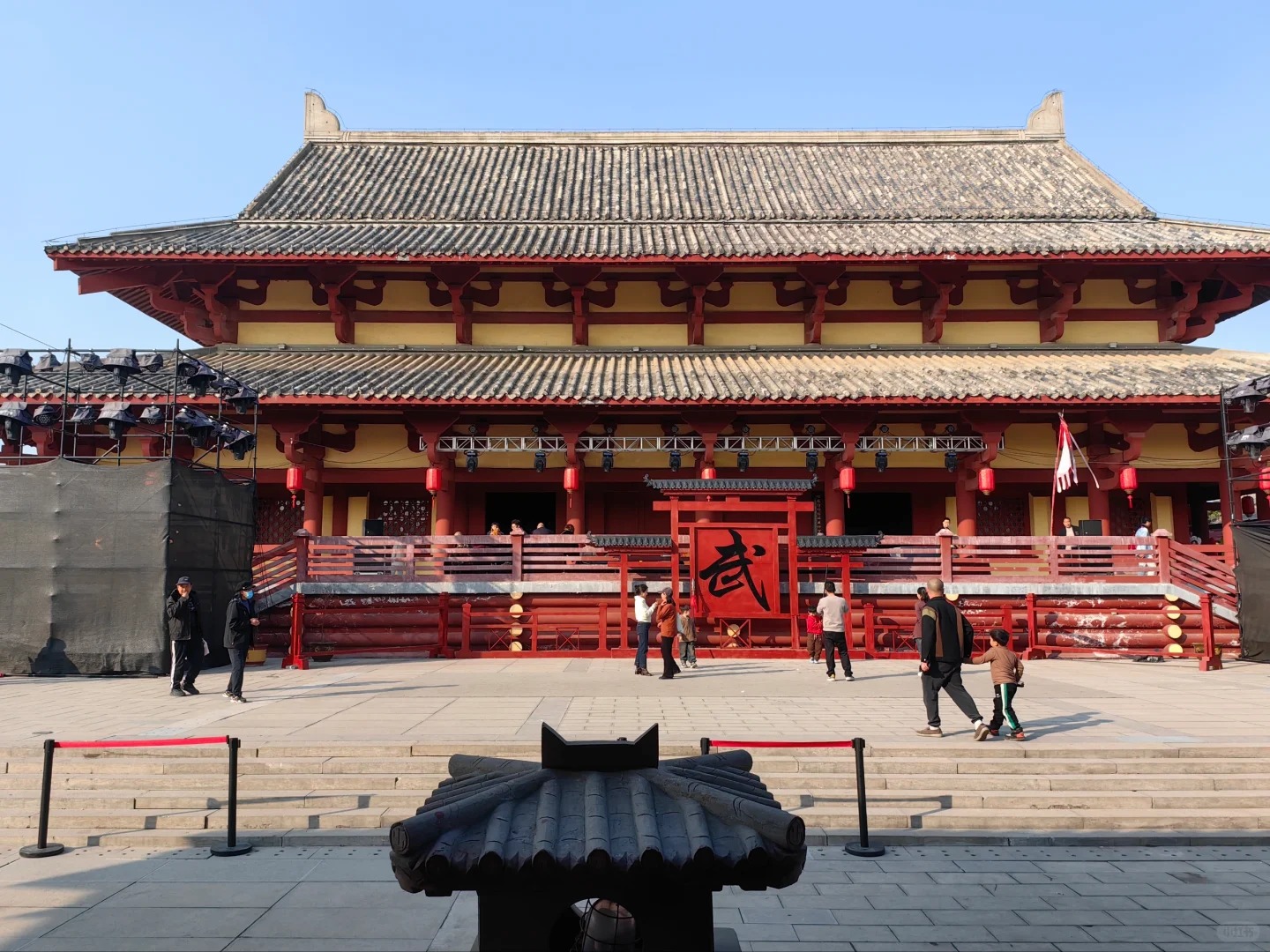Prime Minister Cao's Mansion

Historical Overview
Construction of Caocao's Commander's Mansion began around 200 AD, during Cao Cao's rise to power. The site was strategically chosen in Xuchang, a city that became the de facto capital of Cao Cao's domain. The mansion symbolized Cao Cao's authority and his efforts to unify northern China under the Cao Wei regime. Over the centuries, it witnessed pivotal events, including military planning sessions, political negotiations, and cultural exchanges. In modern times, the mansion has been restored and transformed into a museum, preserving artifacts and stories from the Three Kingdoms era.
Structural Layout
The mansion follows a traditional Chinese architectural layout with a central axis and symmetrical design:
- Front Courtyard: The main entrance leads to a spacious courtyard, where official ceremonies and audiences were held.
- Central Hall: The heart of the mansion, used for administrative meetings and military strategy discussions.
- Residential Quarters: Located behind the central hall, these buildings housed Cao Cao and his family, featuring private chambers, study rooms, and gardens.
- Supporting Structures: Surrounding the main buildings are auxiliary halls, pavilions, and gardens, reflecting the lifestyle of the elite during the Three Kingdoms period.
Major Attractions
- Central Hall: The largest and most imposing structure, where Cao Cao conducted state affairs and military planning.
- Military Strategy Room: A reconstructed chamber displaying maps, weapons, and documents related to Cao Cao's campaigns.
- Private Study: Cao Cao's personal workspace, featuring original calligraphy and historical texts.
- Garden Pavilion: A tranquil spot for relaxation, with traditional Chinese landscaping and a pond.
- Artifact Exhibition Hall: Showcases relics from the Three Kingdoms period, including pottery, coins, and weapons.
- Three Kingdoms Cultural Gallery: An interactive exhibit exploring the history, characters, and legacy of the Three Kingdoms era.
Suggested Itineraries
-
Classic Route (1–2 hours):
Main Entrance → Central Hall → Military Strategy Room → Private Study → Garden Pavilion
Highlights: Core areas reflecting Cao Cao's governance and personal life. -
Extended Route (2–3 hours):
Main Entrance → Central Hall → Military Strategy Room → Private Study → Residential Quarters → Artifact Exhibition Hall → Three Kingdoms Cultural Gallery
Highlights: In-depth exploration of the mansion's history and cultural significance. -
Comprehensive Route (Full Day):
Main Entrance → All attractions listed above + Guided tour of the surrounding Xuchang historical sites (e.g., Ancient City walls, temples).
Highlights: A thorough understanding of Cao Cao's era and its impact on Chinese history.
Ticket Purchase
- Online: Book tickets via the official website or popular Chinese platforms like WeChat and Ctrip (up to 7 days in advance).
- On-Site: Tickets are available at the entrance, but queues may be long during peak seasons.
- Prices:
- Adults: ¥40 (peak season), ¥30 (off-season).
- Students/Seniors: ¥20 (peak season), ¥15 (off-season).
- Free: Children under 1.2m, disabled visitors, and military personnel.
Transportation
- By Subway: Not directly accessible by subway; take a taxi or bus from the nearest subway station.
- By Bus: Routes 5, 10, or 101 to the "Caocao's Mansion" stop.
- By Taxi: Directly to the main entrance; the journey takes about 20 minutes from downtown Xuchang.
- Departure: Exit via the main gate; nearby attractions include Xuchang ancient city wall and spring and autumn Tower.
Best Time & Tips
- Peak Hours: Avoid 10 AM–2 PM; visit early (8:30 AM opening) or late (after 3 PM).
- Crowds: Weekends and holidays are busiest; weekdays are quieter.
- Weather: Spring (April–May) and autumn (September–October) are ideal for visiting.
- Essentials:
- Wear comfortable shoes (the site is large and requires walking).
- Bring sunscreen and a hat during summer.
- Photography is allowed (no flash in indoor exhibits).
- Prohibited items: Large bags, drones, and selfie sticks.
Contact Us
What Our Clients Say?
Based on 10,000+ traveler reviews














